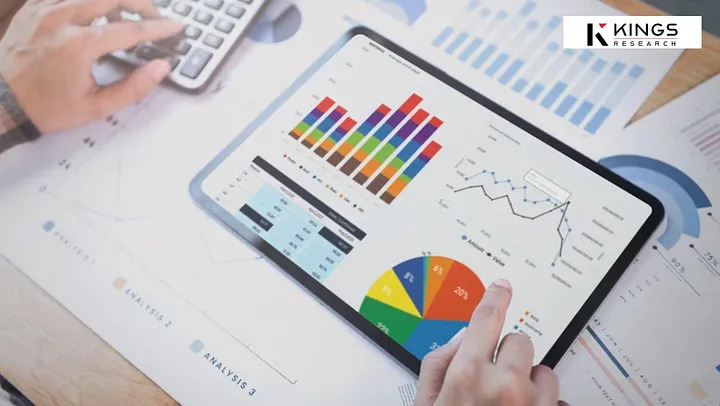The global biocomposites market has emerged as a pivotal sector in the materials industry, driven by the increasing demand for sustainable, eco-friendly, and high-performance materials across various applications. According to recent data from Kings Research, the biocomposites market is poised for significant growth, with a compound annual growth rate (CAGR) that underscores its potential to revolutionize industries such as construction, automotive, consumer goods, and more. This press release delves into the key aspects of the biocomposites market, including market growth, emerging trends, demand dynamics, segment analysis, key players, and regional insights.
The global biocomposites market, valued at USD 48.17 billion in 2023, is expected to rise from USD 55.00 billion in 2024 to USD 151.65 billion by 2031, growing at a CAGR of 15.59%. This surge is driven by increasing demand for bio-based polymers, fueled by sustainability trends, eco-friendly material adoption, and advancements in biocomposite technology across various industries.Top of FormBottom of Form
Market Growth and Projections
The biocomposites market has witnessed robust growth in recent years, fueled by the global shift towards sustainability and the need to reduce reliance on non-renewable resources. Kings Research estimates that the market will continue to expand at a steady CAGR over the forecast period, reaching a substantial valuation by the end of the decade. This growth is attributed to the increasing adoption of biocomposites in various industries, driven by their lightweight, durable, and environmentally friendly properties. Governments and regulatory bodies worldwide are also playing a crucial role in promoting the use of biocomposites through stringent environmental regulations and incentives for sustainable practices.
Emerging Trends in the Biocomposites Market
Several trends are shaping the future of the biocomposites market. One of the most prominent trends is the growing emphasis on circular economy principles, which prioritize the use of renewable resources and the recycling of materials. Biocomposites, which are typically made from natural fibers and biodegradable resins, align perfectly with this trend. Additionally, advancements in material science and manufacturing technologies are enabling the development of high-performance biocomposites that can compete with traditional materials like plastics and metals in terms of strength, durability, and versatility.
Another significant trend is the increasing use of biocomposites in the automotive industry. As automakers strive to reduce vehicle weight and improve fuel efficiency, biocomposites are being increasingly incorporated into interior and exterior components. This trend is further supported by the rising consumer demand for eco-friendly vehicles. Similarly, the construction industry is witnessing a surge in the use of biocomposites for applications such as decking, cladding, and insulation, driven by the need for sustainable building materials.
Unlock Key Growth Opportunities: https://www.kingsresearch.com/biocomposites-market-1290
Demand Dynamics
The demand for biocomposites is being driven by a combination of environmental concerns, regulatory pressures, and consumer preferences. As awareness of the environmental impact of traditional materials grows, industries are increasingly turning to biocomposites as a viable alternative. The construction sector, in particular, is a major driver of demand, as biocomposites offer a sustainable solution for building materials that are both durable and aesthetically pleasing. The automotive industry is another key driver, with biocomposites being used to reduce vehicle weight and improve fuel efficiency.
Consumer goods manufacturers are also embracing biocomposites for products such as furniture, packaging, and electronics. The demand for eco-friendly packaging solutions, in particular, is on the rise, as consumers and businesses alike seek to reduce their environmental footprint. Additionally, the medical and healthcare sector is exploring the use of biocomposites for applications such as prosthetics and medical devices, driven by the need for biocompatible and sustainable materials.
Segment Analysis
The biocomposites market can be segmented based on material type, application, and end-use industry. In terms of material type, the market is divided into natural fiber composites and wood-plastic composites. Natural fiber composites, which are made from fibers such as flax, hemp, and jute, are gaining popularity due to their biodegradability and low environmental impact. Wood-plastic composites, on the other hand, offer a balance of strength and durability, making them suitable for a wide range of applications.
By application, the market is segmented into construction, automotive, consumer goods, and others. The construction segment currently dominates the market, driven by the widespread use of biocomposites in building materials. The automotive segment is also growing rapidly, as automakers increasingly incorporate biocomposites into vehicle design. The consumer goods segment is expected to witness significant growth in the coming years, driven by the demand for sustainable products.
In terms of end-use industry, the market is segmented into residential, commercial, and industrial. The residential segment is a major driver of demand, as homeowners and builders seek sustainable materials for construction and renovation projects. The commercial segment is also growing, driven by the use of biocomposites in office buildings, retail spaces, and other commercial properties. The industrial segment is expected to witness steady growth, driven by the use of biocomposites in manufacturing and other industrial applications.
Key Companies in Biocomposites Market:
- UPM
- UFP Industries, Inc.
- Stora Enso
- Trex Company, Inc.
- Fiberon
- FlexForm Technologies
- Tecnaro GmbH
- Meshlin Composites Zrt
- Nanjing Jufeng Advanced Materials Co., Ltd.
- Bcomp
- BioComposites Group (BCG)
- Lingrove Inc.
- Procotex
- RTP Company
- Rock West Composites, Inc.
Regional Analysis and Growth Opportunities
The biocomposites market is geographically diverse, with significant growth opportunities in various regions. North America currently dominates the market, driven by the strong demand for sustainable building materials and the presence of key players in the region. The United States, in particular, is a major market for biocomposites, with the construction and automotive industries being the primary drivers of demand.
Europe is another key market for biocomposites, with countries such as Germany, France, and the United Kingdom leading the way in terms of adoption and innovation. The European Union’s stringent environmental regulations and commitment to sustainability are driving the demand for biocomposites in the region. The construction and automotive industries are the primary drivers of demand in Europe, with a growing emphasis on green building practices and eco-friendly vehicles.
The Asia-Pacific region is expected to witness the fastest growth in the biocomposites market over the forecast period. Rapid industrialization, urbanization, and increasing environmental awareness are driving the demand for biocomposites in countries such as China, India, and Japan. The construction industry is a major driver of demand in the region, as governments and private sector players invest in sustainable infrastructure projects. The automotive industry is also growing rapidly in the Asia-Pacific region, driven by the increasing demand for vehicles and the need for lightweight, eco-friendly materials.
Latin America and the Middle East & Africa are also emerging as important markets for biocomposites, driven by the growing demand for sustainable materials in construction and other industries. In Latin America, countries such as Brazil and Mexico are witnessing increased adoption of biocomposites, driven by the need for sustainable building materials and the growing automotive industry. In the Middle East & Africa, the construction industry is a major driver of demand, as governments invest in infrastructure development and sustainable building practices.
Conclusion
The biocomposites market is poised for significant growth in the coming years, driven by the increasing demand for sustainable, eco-friendly materials across various industries. With advancements in material science and manufacturing technologies, biocomposites are becoming an increasingly viable alternative to traditional materials. Key players in the market are driving innovation and shaping the competitive landscape, while regional markets offer significant growth opportunities. As the world continues to prioritize sustainability, the biocomposites market is set to play a crucial role in shaping the future of the materials industry.









